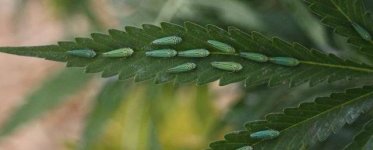Like I said b4... I have photos on here of a 24k lighter with Tahoe OG Kush from Progressive Options...the Kingdom of all these Bugs/Diseases/Viruses... Not one plant duded out and everything was super dank... again next round...same room... green crack... different treatments... 95% DUDS...
I noticed Fungus Gnats... and what I thought was a Katydid most likely a Leaf Hopper
lets hear from other people who have this problem...and not from naysayers who have zero experience with this issue
I noticed Fungus Gnats... and what I thought was a Katydid most likely a Leaf Hopper
lets hear from other people who have this problem...and not from naysayers who have zero experience with this issue




